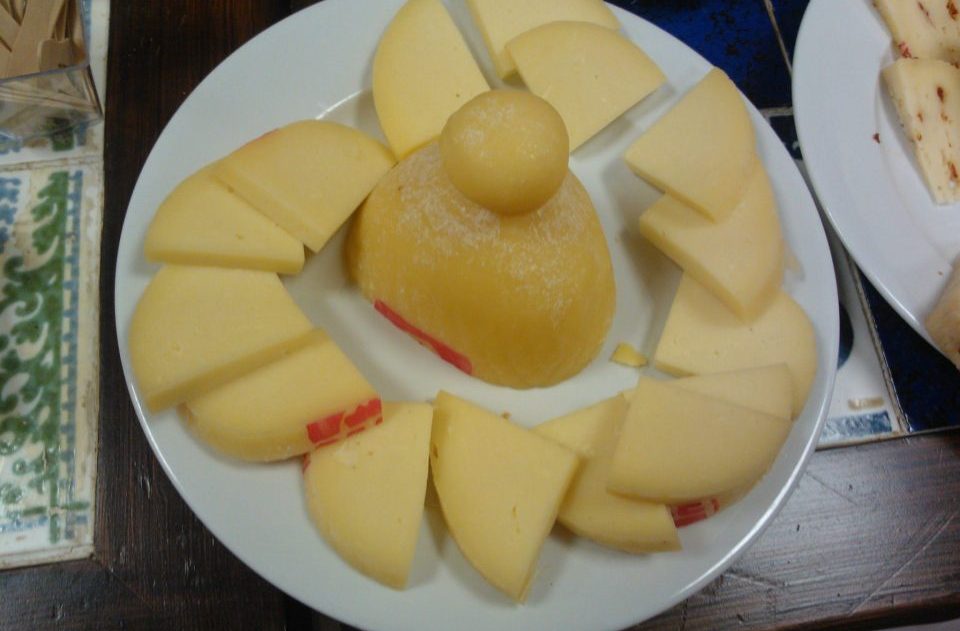“The Art of Knowing how to wait”


Very old stretched curd cheese (dating back to 1500 AD), semi hard, made with fresh raw cow’s milk. Typical of Ragusa’s area, with a more or less strong flavor depending on
seasoning time and a straw yellow color. Uncommon case of parallelepiped shaped caciocavallo cheese. The name caciocavallo comes from the use of tying two pieces of cheese together and putting the cord over a wooden axis like it was “over an horse” (indeed the word “cacio” means cheese and the word “cavallo” means horse). Each piece of caciocavallo cheese weighs about 12 to 16 Kg.

In the cheese producing old tradition the work of cheese making was done by
all family’s people. The husband usually prepared the caciocavallo stretching the curd and creating an about 16 Kg cheese ball (then shaped in a parallelepipedic container). Instead the wife often produced the provola cheese using the same curd making 1 to 3 kg pieces. Often consumed fresh, they can be also seasoned to have a more tasty flavor
(anyway less than the caciocavallo).

This is also a very old cheese (in these days it has almost disappeared from the market). Made with pressed fresh raw cow’s milk, it has a wheel shape.It’s produced by cutting the curd in slices and putting them into a container. Then it is cooked in the “scotta” (the remaining curding liquid) and finally pressed in the way the slices weld together.Often some black or red pepper is added to give a more spicy flavor.Each piece weighs 2 to 10 kg.
In the past years the cheese seasoners were mainly traders of their product: the “caciocavallo” cheeses were bought from producers, let seasoning and finally sold with a noticeable money gain.
Various social and economical reasons brought, in the 80s, to the end of the trading aspect of this activity keeping only the seasoning one. The cheese seasoning work has been done mainly on behalf of the producer or of other businessmen who pay a price for it.
The “maizé”, sicilian word for warehouses intended for cheese seasoning, are for this reason becoming increasingly bigger and so able to contain thousands pieces of caciocavallo cheese. In this way the seasoning activity was optimized and the profits grew accordingly.
Of course, since the cheese seasoners were no more involved in selling activity, their interest in the product quality was reduced. This point together with the difficulties in seasoning thousands pieces of cheese have, in my opinion, decreased the overall quality of caciocavallo cheese in the market in the last few years. A caciocavallo more salty and dry keeps better in time, has a reduced risk of going to waste, doesn’t need so much treatment, it’s easy to clean before selling and gives the same profit.
These are some of the main reasons for the caciocavallo’s bad quality sold by Mass Market Retail.
The caciocavallo cheese is eaten fresh, half seasoned (3 to 6 month) or fully seasoned (more than 6 month, but normally above 12 month). It’s a main ingredient of many traditional local recipes.
For Ragusan (and generally sicilian) people it’s normal to cover the pasta al pomodoro with grated caciocavallo cheese, to fry it with eggs, to melt it over aubergines, to combine it with other starters, to put it in the pasta al forno in little pieces, to use it to give more flavor to the brodo di carne (consomme with meal) or simply to stuff some soft bread together with oil and origan.